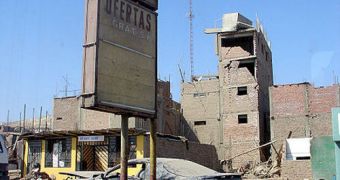The United States, and other developed countries affected by active fault lines, would do well to learn a few lessons on how to defend against the effects of earthquakes from New Zealand, a new analysis shows.
The document, put together by experts at the Arizona State University (ASU), shows that the country was a lot less affected by the recent tremor it sustained than Haiti was earlier this year.
The two nations were hit by tremors of similar magnitude. The recent one took place on September 4, and had a magnitude of 7.1 degrees of the Richter scale.
It struck in the area of Christchurch, which is one of the largest and most populated cities in New Zealand, but it caused a lot less than the 200,000 casualties of the Haiti tremor.
This was largely due to the fact that the seismic event was triggered in an area that had stringent construction and engineering norms, which do not allow for low-quality buildings to be constructed.
The new investigation was led by ASU geotechnical engineering expert Edward Kavazanjian, who says that the lessons from the September 4 are clear to anyone who has eyes to see.
He goes on to say that the effect of the Darfield quake were very widely-felt, but that it failed to produce so many victims due to New Zealand's sustainable engineering practices.
Kavazanjian conducted the new study as part of the National Science Foundation-supported Geotechnical Extreme Event Reconnaissance team that was deployed to the country a week after the disaster.
Such teams are generally made up of geologists and engineers. The expert is a professor in the School of Sustainable Engineering and the Built Environment at ASU.
This is one of the university's famous Ira A. Fulton Schools of Engineering. Kavazanjian explains that New Zealand was, in effect, prepared to face an earthquake.
Decade-long plans to upgrade emergency response capabilities had been completed, and evacuation and rescue plans were already drawn up.
As a result, essential public services such as water, power and transportation, were restored in the worst-hit area within a day of the earthquake. Within 5 days, almost all services were restored.
“The social, environmental and capital cost of damage and destruction due to liquefaction in residential areas will likely turn out to be the major impact of this earthquake,” Kavazanjian reveals.
The Darfield quake made authorities declare at least 10,000 homes unfit for human occupancy.

 14 DAY TRIAL //
14 DAY TRIAL //